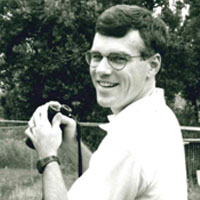
Mike Carter, founder of Colorado Bird Observatory
I never get asked, “What were you thinking, when you started Bird Conservancy of the Rockies (then Colorado Bird Observatory)—except when an anniversary rolls around.” That’s when it suddenly becomes a pretty common question. Not surprising, really, and anniversaries are always a good time to pause and take stock.
During the end of the 1980s, we were seeing the first analysis of bird population data from programs like the Breeding Bird Survey. Because of widespread and pretty clearly documented declines, people were beginning to sound the alarm for migratory birds. Similar events with waterfowl resulted in the North American Waterfowl Management Plan being formed with Partners in Flight quickly on its heels.
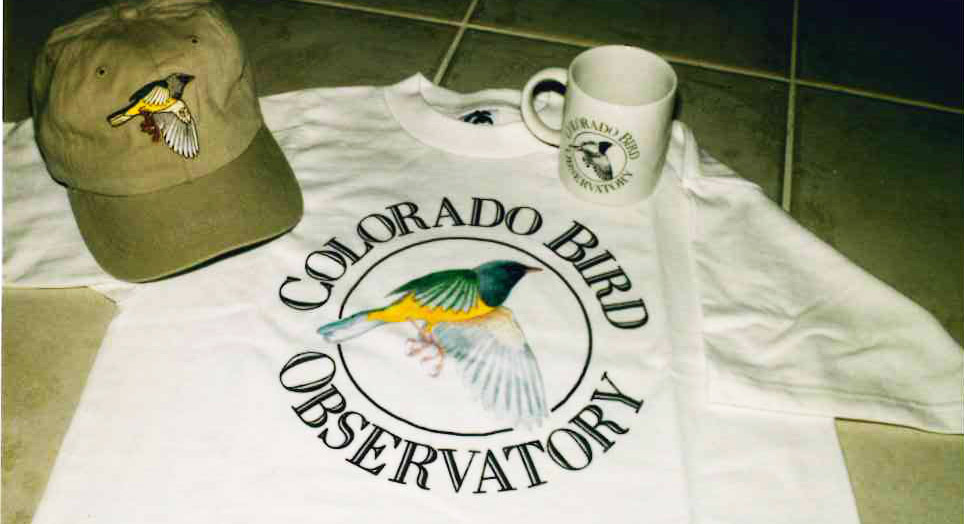
Colorado Bird Observatory (the organization’s second name) was created in response to these events. The first name was actually Barr Lake Bird Observatory, chosen because bird observatories in those days were named after famous places or ones with long-running sets of bird records. Barr Lake provided both, with records dating back over 150 years. We changed the name, at the last minute, based on a prophetic recommendation by a future Board member who suggested this thing might just grow beyond Barr Lake. That is really funny to me today!
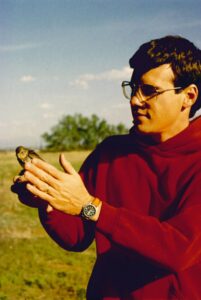
He doesn’t look 28 years old, does he?
Looking back now… I was 28, married, with a one-year-old daughter, and I too wonder ‘what was I thinking?’ Well, other personal events did influence the situation. I had just returned from a Peace Corps stint in West Africa and was impressed with how the people did so much with so little, as well as their approaches to wildlife management. The lines between game and non-game were fuzzy, a very different concept from how we had been doing things in North America.
I was working for an agency as a temporary employee where I was tasked with sorting and identifying a freezer full of road-killed hawks and owls. I’m pretty sure most of my identifications were accurate, but still easily dismissed since I was just a temporary staffer. The folks at this particular agency didn’t have much in the way of bird identification skills, themselves—and the agency wasn’t in a position to support the increasing need for migratory bird conservation. I could see both a coming need, and an opportunity.
So, those three events: species declines being reported, experiences in Africa, and a shortfall in specific training to professionals, provided me with the personal motivation. Meanwhile, activities on other fronts were also pushing the idea forward. We were running a banding station at Barr Lake which was pretty inspiring to both the kids and adults who visited. Most Bird Observatories included banding and education/outreach in their project portfolio. Add some motivated volunteers and a nesting pair of Bald Eagles, and suddenly it seems like the whole endeavor was destiny.
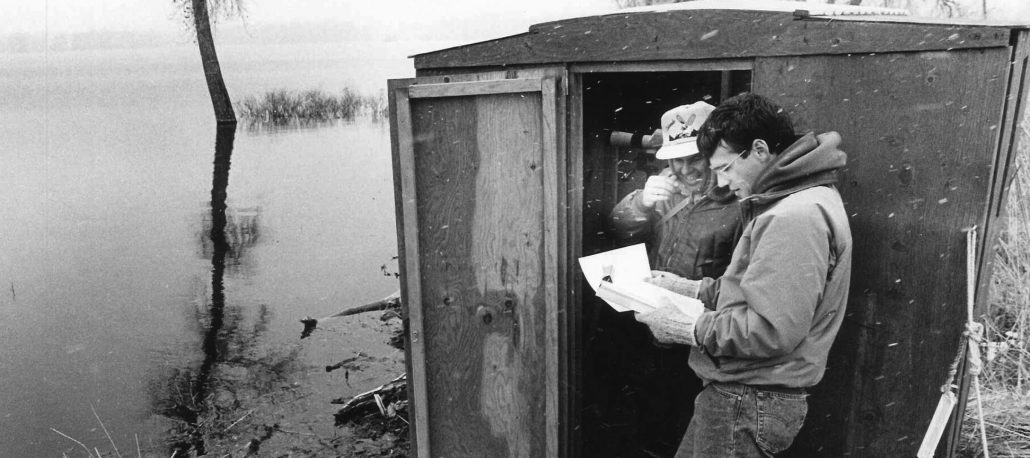
Visiting the Bald Eagle blind at Barr Lake, ca. 1988.
In Bald Eagle Watch’s first year, 100 people volunteered over 1500 hours of time to monitor the rare pair of nesting eagles.
I also get asked, “Had you ever been to a Bird Observatory?” At that time, no, but my first step was to write a lot of letters to other established observatories—including the first at Fair Isle (Scotland)—asking what I needed to know. To this day, I remember, and am grateful, for replies from Manomet Bird Observatory (now just Manomet), Point Reyes (Point Blue Conservation Science) and White Fish Point (still White Fish Point Bird Observatory).
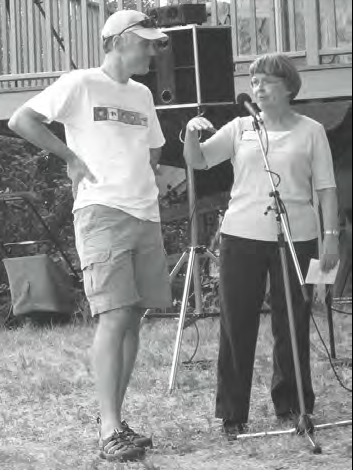
Mike receives the 2009 Richard G. Levad Award from Karen Levad in recognition of his exemplary service to the field of ornithology.
Today, one of the things I love to do is to listen to a new Bird Conservancy employee recite the organization’s mission and explain what it does. Sometimes, I relay my background with the organization. Sometimes I don’t, and just listen. The world of bird conservation is very different, and yet the ideas that got us started 30 years ago are still very evident in those conversations.
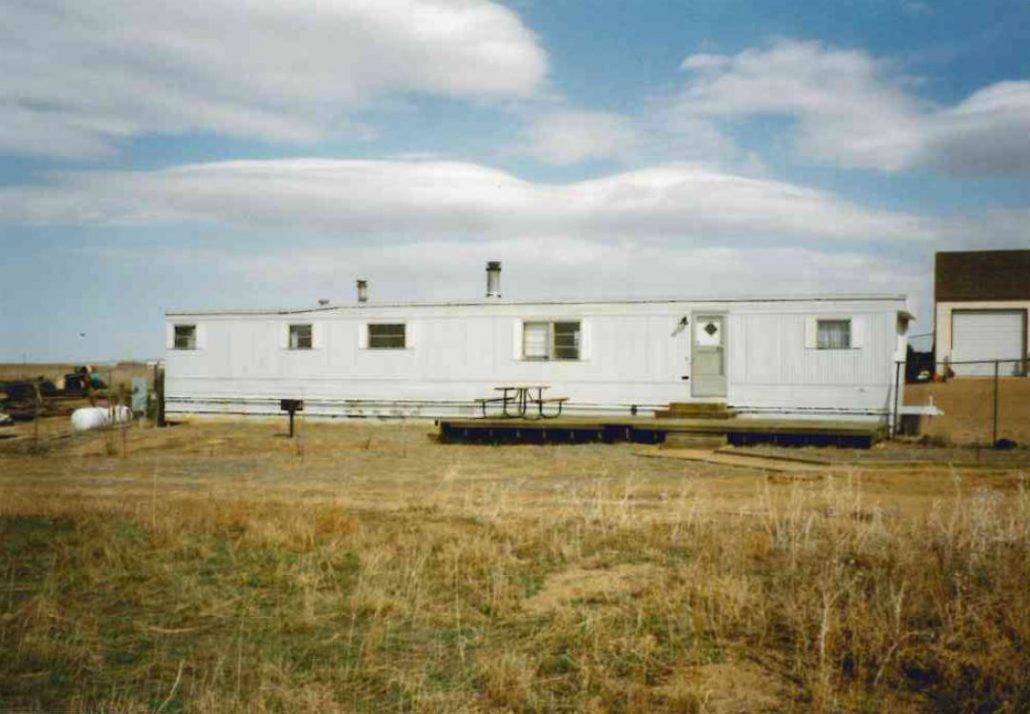
Blast from the past! Until moving into the Old Stone House in 2000,
this charming mobile home was our organization’s base of operations.
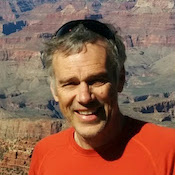
Mike Carter was founder and Executive Director of the Colorado Bird Observatory (1988-2001) and is gifted in creating collaborative conservation efforts. He has published in such journals as Birding and Bird Conservation, The Auk, Audubon Field Notes, and Bulletin of the British Ornithologists’ Club). Mike continues to work in the field as Coordinator of Playa Lakes Joint Venture, a job he took after leaving Rocky Mountain Bird Observatory (the third name!) in 2001. He works with Bird Conservancy’s team on an almost-daily basis to advance conservation for the benefit of people, birds and land.


